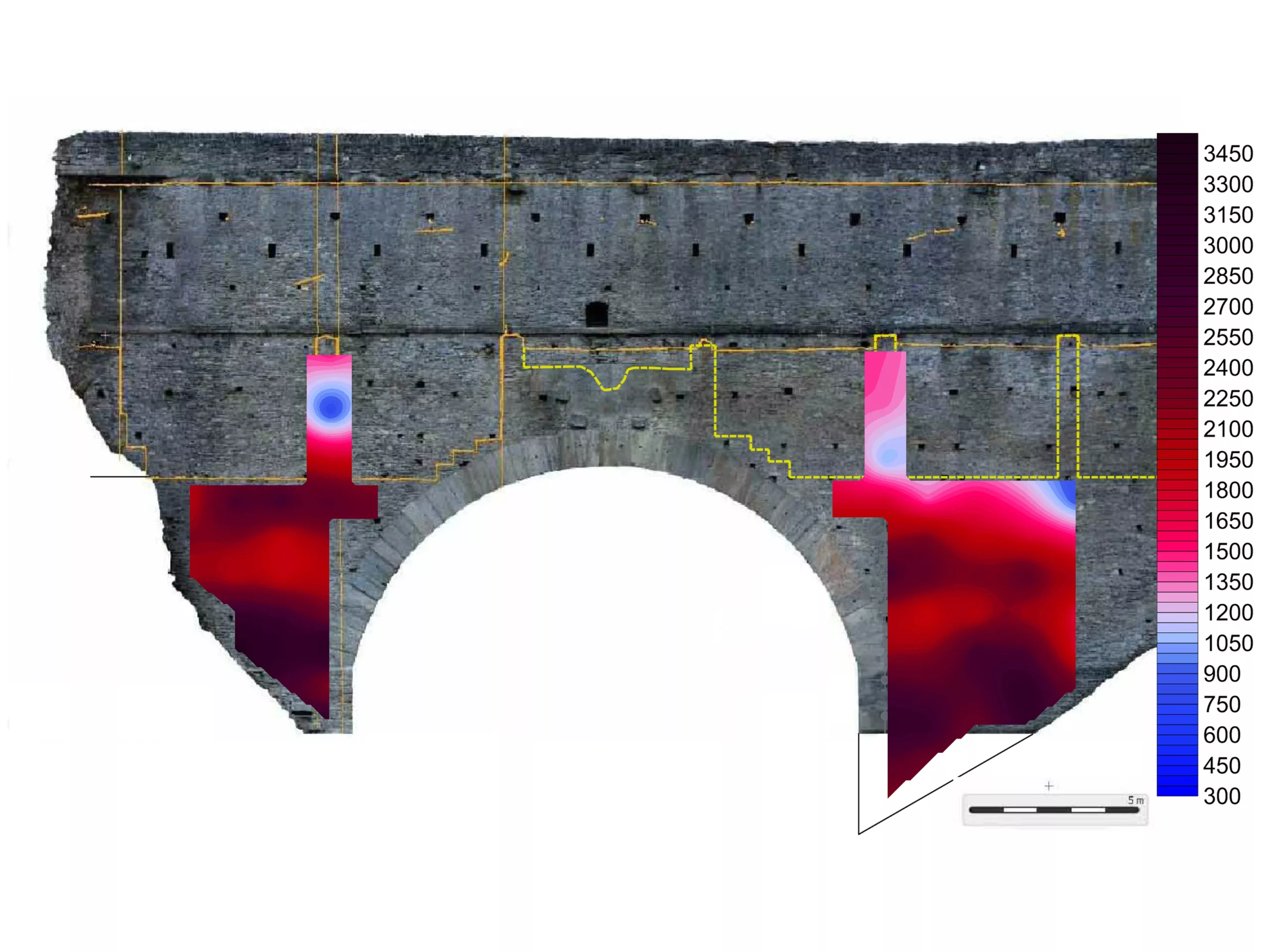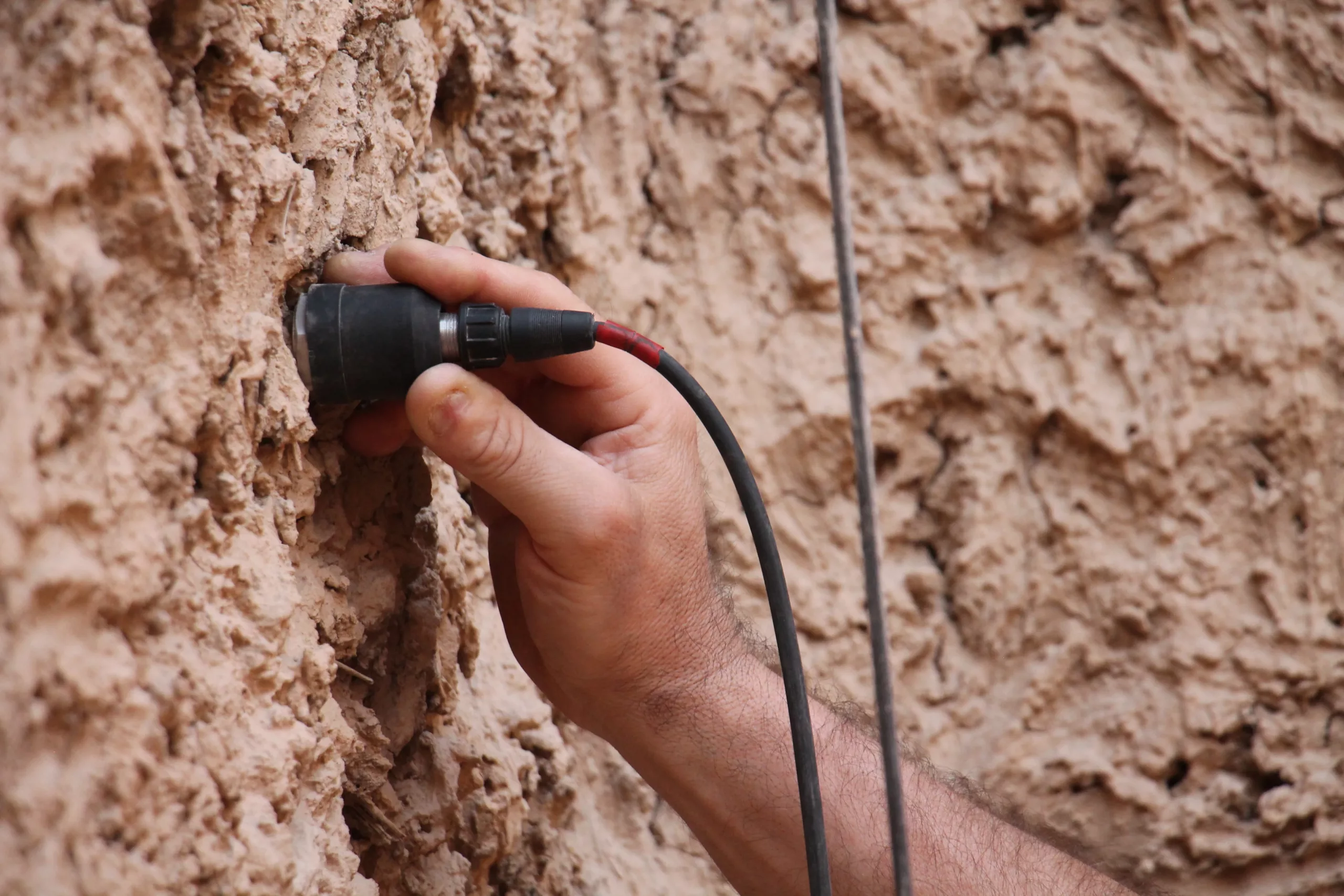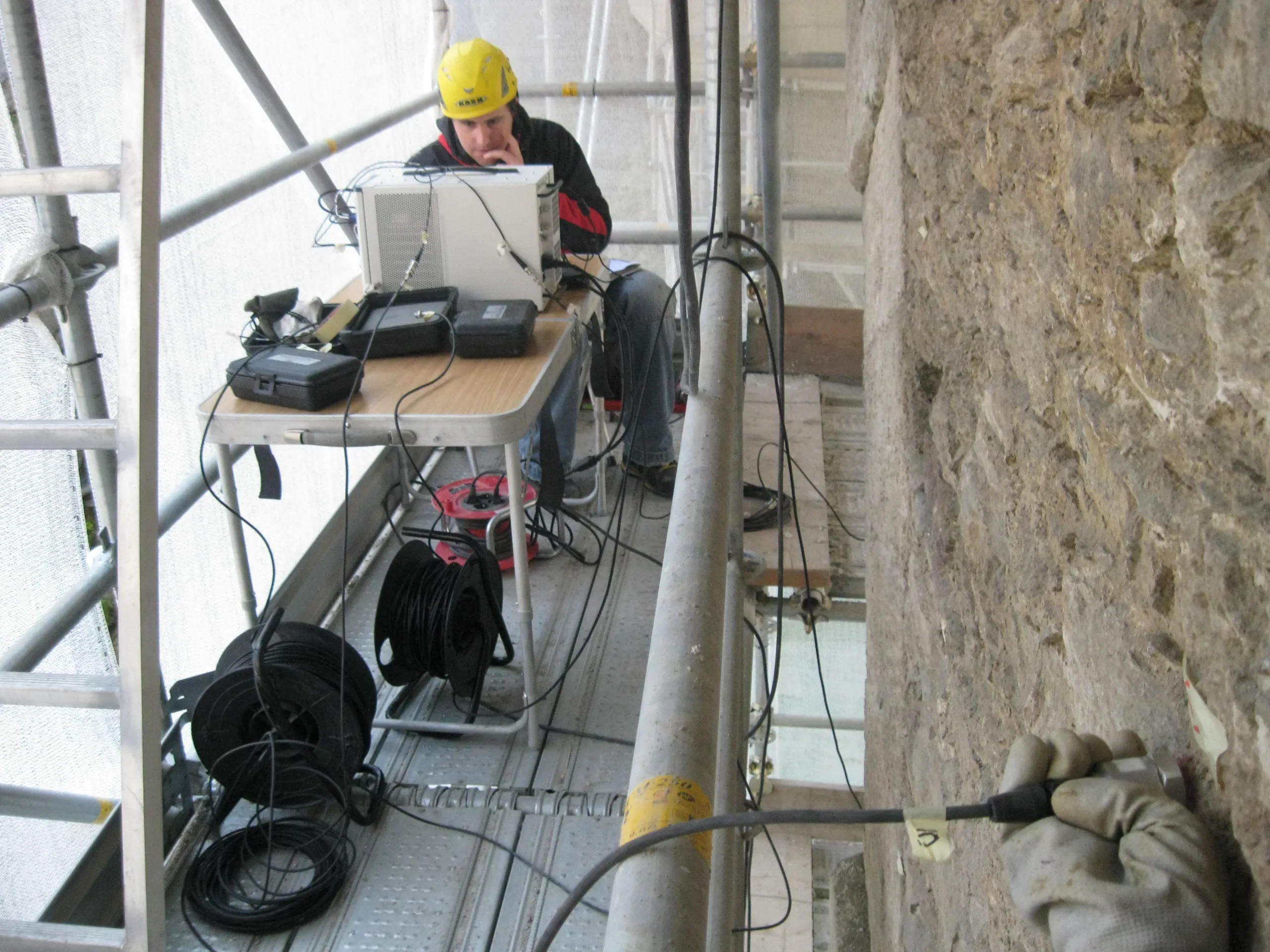


Sonic pulse velocity test
Sonic test obtains the speed of propagation of mechanical waves through the investigated wall panel. The test provides qualitative information (quantitative if carried out in a comparative manner, for example to identify singular situations of repetitive elements) on masonry density/soundness and on the presence of cavities, cracks or heterogeneities intercepted along the transmission path of the wave.
Sonic pulses with frequencies in the range of mechanical noise (20-20000 Hz) are generated on the wall surface by an instrumented hammer, and it is then received by a sensor (piezoelectric accelerometer) located on the opposite side of the wall (direct test), on the same side (indirect test) or on adjacent sides (semi-direct test).
Reference standards: ASTM C597–16; RILEM TC 127-MS.D.1.
